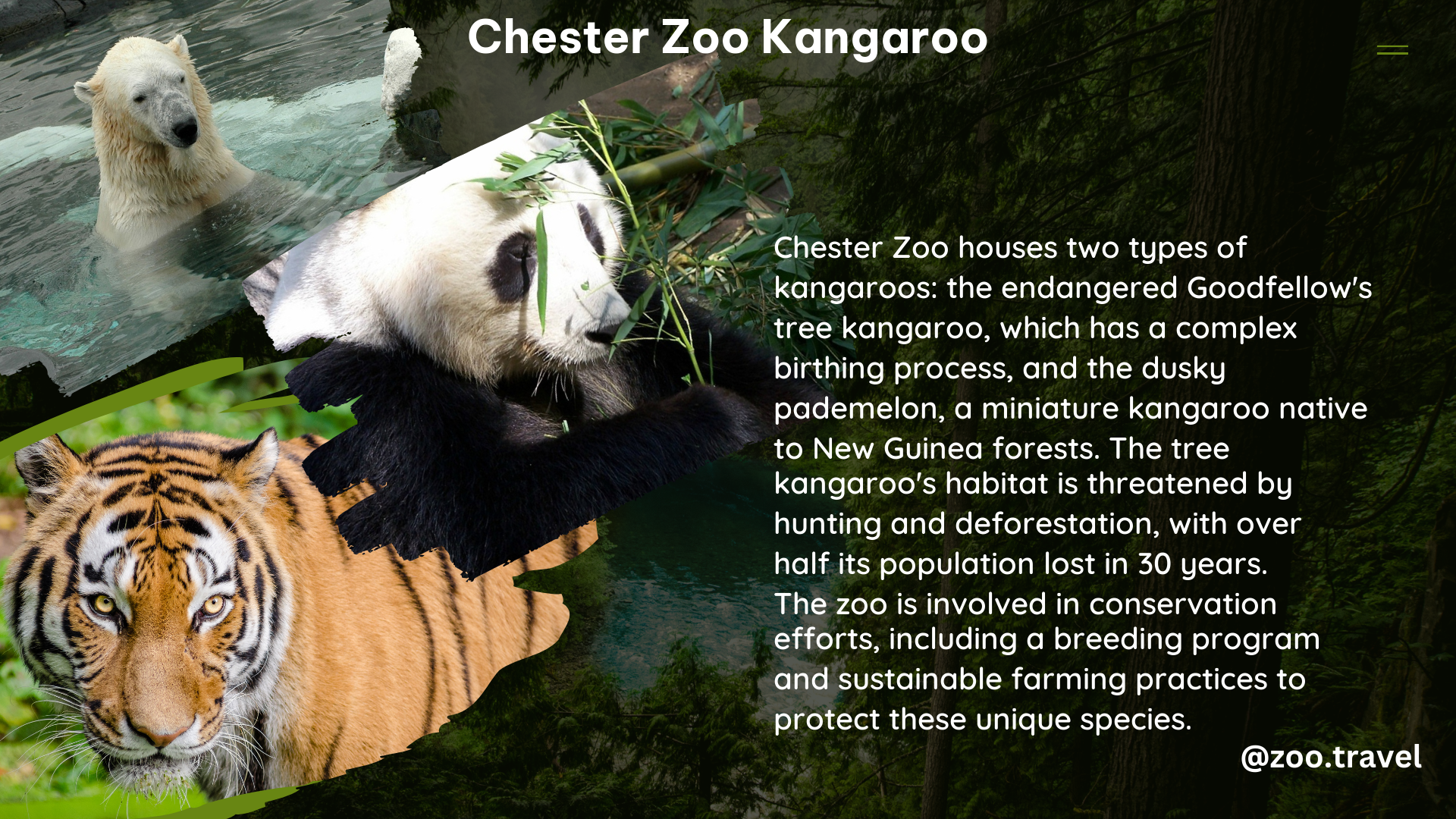Chester Zoo is home to a diverse array of fascinating animals, including two species of kangaroos that are native to the tropical rainforests of Papua New Guinea. In this comprehensive guide, we’ll explore the captivating world of the Goodfellow’s tree kangaroo and the dusky pademelon, both of which can be found at this renowned zoo.
Goodfellow’s Tree Kangaroo at Chester Zoo
The Goodfellow’s tree kangaroo is a unique and endangered species that calls the lush, verdant forests of Papua New Guinea home. These remarkable creatures are adept climbers, with long curved claws, rubbery soles, and a strong, prehensile tail that helps them navigate the intricate canopy with ease.
As herbivores, Goodfellow’s tree kangaroos feed on a variety of flowers, grasses, and leaves, playing a vital role in the ecosystem. Their birthing process is particularly fascinating, as the newborn joey is only the size of a jellybean and must instinctively crawl up its mother’s belly and into her pouch to continue its development.
Chester Zoo is proud to be part of the Goodfellow’s tree kangaroo conservation breeding program, working tirelessly to protect this highly threatened species from extinction. Through their dedicated efforts, the zoo has successfully bred these remarkable animals, contributing to the ongoing efforts to safeguard their future.
Dusky Pademelon at Chester Zoo

Alongside the Goodfellow’s tree kangaroo, Chester Zoo is also home to the dusky pademelon, another species native to the forests of New Guinea. These herbivores are known for their large ears, strong hind legs, and short, thick tails that help them maintain balance as they navigate their arboreal habitat.
Dusky pademelons are solitary animals that come together to mate, breeding throughout the year. After a month-long gestation period, a single baby is born and continues to grow inside the mother’s pouch for around 6 months.
Unfortunately, the dusky pademelon is at risk of complete extinction, with only a few individuals living in European zoos. Chester Zoo is working diligently to gain a deeper understanding of the behaviors and traits of these animals, with the goal of promoting their conservation and ensuring their survival.
The Importance of Conservation Efforts
The presence of the Goodfellow’s tree kangaroo and the dusky pademelon at Chester Zoo is a testament to the zoo’s commitment to conservation and the preservation of endangered species. By housing these remarkable animals and participating in breeding programs, Chester Zoo is playing a vital role in the fight against extinction.
Through educational initiatives and public engagement, the zoo aims to raise awareness about the plight of these species and the importance of protecting their natural habitats. Visitors to Chester Zoo have the unique opportunity to observe these captivating creatures up close, fostering a deeper appreciation for the diversity of life on our planet.
As we continue to face the challenges of habitat loss, climate change, and human-wildlife conflict, the work of zoos like Chester Zoo becomes increasingly crucial. By supporting conservation efforts and promoting sustainable practices, we can all play a part in ensuring that the Goodfellow’s tree kangaroo, the dusky pademelon, and countless other species continue to thrive for generations to come.
Conclusion
Chester Zoo’s Goodfellow’s tree kangaroo and dusky pademelon are truly remarkable creatures, each with their own unique adaptations and fascinating behaviors. Through the zoo’s conservation efforts and public education initiatives, visitors have the opportunity to learn about these endangered species and the importance of protecting their fragile habitats.
As we explore the wonders of the natural world, it’s essential that we remain committed to the preservation of biodiversity and the protection of vulnerable species. By supporting the work of Chester Zoo and other conservation organizations, we can all contribute to a brighter future for these incredible animals and the ecosystems they call home.
